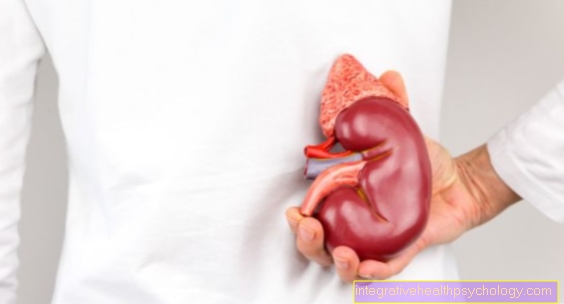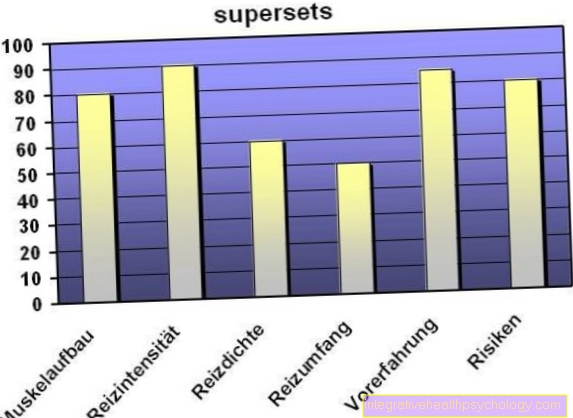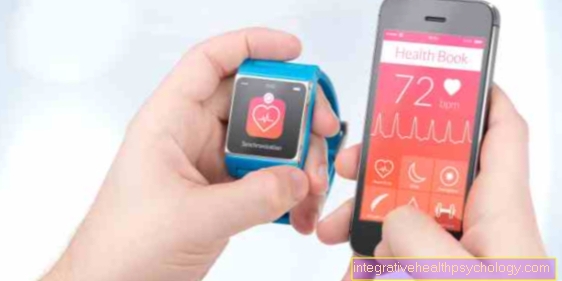Bepanthen® Antiseptic Wound Cream
introduction
The antiseptic wound cream from Bepanthen® is a special cream for the initial treatment of superficial abrasions, cracks, scratches and lacerations.
It can be used once the wound has stopped bleeding and oozing. Wounds can serve as entry points for pathogens and thus promote infections. Bepanthen® antiseptic wound cream counteracts this and, thanks to the high water content, also contains a cooling component.

Indications for Bepanthen® Antiseptic Wound Cream
The indications, i.e. areas of application, for the antiseptic wound cream from Bepanthen® include all superficial skin wounds, regardless of their origin (abrasions, lacerations, scratches or tears).
Also read: Bepanthen® scar gel
Active ingredient and effect
Bepanthen® antiseptic wound cream contains 5 milligrams of chlorhexidine per gram of cream as an active ingredient. This active ingredient is used in a wide range of applications as an antiseptic (e.g. in mouth rinses) and has an antibacterial and fungicidal (against fungus) effect.
In addition, one gram of the wound cream contains 50 milligrams of dexpanthenol. This active ingredient is a provitamin that improves both the skin's water-binding capacity and its elasticity. In addition, it promotes the formation of new skin cells and has an anti-inflammatory effect. In this way, dexpanthenol supports wound healing.
Side effects
The antiseptic wound cream from Bepanthen® does not contain any coloring, fragrance or preservatives.
Even if the two active ingredients chlorhexidine and dexpanthenol are usually well tolerated when used as a cream, they can cause side effects in rare cases. The wound cream occasionally causes skin irritation in the form of itching, reddening or blisters or a contact allergy. If necessary, this can be confirmed by an allergy test.
In rare cases, the allergic reaction to the active ingredients can be severe and lead to potentially life-threatening anaphylactic shock. Therefore, if you experience any side effects, you should consult a doctor or pharmacist and suspend the use of the antiseptic wound cream until further notice.
When using the antiseptic cream from Bepanthen®, make sure that no cream gets into the eyes or on other mucous membranes. This can quickly lead to irritation. Should this happen accidentally, wash the affected area thoroughly.
application
Before using the antiseptic wound cream from Bepanthen®, you should always read the package insert and follow the instructions of your doctor or pharmacist. If you have any doubts, do not hesitate to ask them again.
Before using the antiseptic wound cream from Bepanthen®, the wound should be cleaned thoroughly, e.g. with the help of sterile cloths. When the wound stops bleeding or wetting, the wound cream is gently applied to the wound with your finger. Of course, don't forget to wash your hands (and preferably disinfect them) beforehand!
If necessary, the wound can then be covered with a suitable bandage or plaster. The antiseptic wound cream from Bepanthen® should generally, but especially for pregnant women, not be used over a large area, but only in the wound area. Breastfeeding should also refrain from using it in the breast area.
The antiseptic cream from Bepanthen® is not compatible with soaps or other anionic (negatively charged) substances. If used at the same time, the effect may be neutralized or an intolerance reaction may occur. Therefore, if possible, use soap and wound cream with sufficient time apart (e.g. not immediately after showering).
You may also be interested in this topic: Skin care
dosage
The antiseptic wound cream should be spread very thinly in the wound area. The treatment usually lasts around one to two weeks. Apply the wound cream twice a day during this period.
If no improvement is noticeable after a few days, consult your doctor or pharmacist in order to obtain an alternative if necessary.
price
The AVP (pharmacy retail price) for the 20 gram tube of Bepanthen® antiseptic wound cream is € 5.88. If you have received a prescription for the wound cream from the doctor, the additional payment you have to make is € 5.00, unless you are exempt from the additional payment - then the antiseptic wound cream is free of charge for you after submitting the prescription.
Special areas of application
With the baby
Due to its good skin tolerance, the antiseptic wound cream from Bepanthen® can be used at any age, including babies. With regard to application and dosage, the same rules apply as for children or adults. However, you should check the wound site regularly so that you can detect the occasional skin irritation and allergic reactions at an early stage.
It is also advisable to cover the wound with a bandage or plaster after applying the wound cream so that the wound cream cannot get into the baby's mouth by licking either directly or by licking the fingers.
After a tattoo
Basically, the antiseptic cream from Bepanthen® is suitable for use on fresh tattoos. However, experts repeatedly point out that the risk of inflammation with a hygienically perfect tattoo is relatively low and therefore no antiseptic creams are necessary.
Discuss this with your tattoo artist and preferably with a dermatologist beforehand. The use of ointments containing dexpanthenol without an antiseptic effect is often recommended, e.g. Bepanthen® wound and healing ointment or Pegasus tattoo cream.
Read more: Aftercare for a tattoo
After a piercing
The antiseptic wound cream from Bepanthen® is also suitable for the care of fresh piercings. The fat contained ensures that the antiseptic wound cream penetrates well into the piercing canal. Since a piercing penetrates deeper than a tattoo, the antiseptic active component makes a lot of sense here, so a pure dexpanthenol ointment like the Bepanthen® wound and healing ointment is not sufficient.
If your piercing is a piercing in the mouth or nose area, the antiseptic cream from Bepanthen® is not suitable due to its irritating effect on mucous membranes. It is better to use suitable ointments, sprays or mouthwashes, for example from ProntoLind®.





























